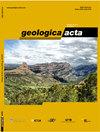Weld kinematics of syn-rift salt during basement-involved extension and subsequent inversion: Results from analog models
IF 2
4区 地球科学
Q2 GEOLOGY
引用次数: 18
Abstract
Scaled analog models based on extensional basins with synrift salt show how basement topography exerts a control factor on weld kinematics during the extension and inversion phases. In the case of basement-involved extension, syn-rift salt thickness differences may lead to variable degrees of extensional decoupling between basement topography and overburden, which in turn have a strong impact on the development of salt structures. With ongoing extension and after welding, the basin kinematics evolves toward a coupled deformation style. The basin architecture of our experimental results record the halokinetic activity related to growing diapirs and the timing of weld formationduring extension. Moreover, the structures that result from anysubsequent inversion of these basins strongly depends on the inherited welds and salt structures. While those basins are uplifted,the main contractional deformation during inversion is absorbed by the pre-existing salt structures, whose are squeezed developing secondary welds that often evolve into thrust welds. The analysis of our analog models shows that shortening of diapirs is favored by: i) basement topography changes that induce reactivation of primary welds as thrust welds; ii) reactivation of the salt unit as a contractional detachment and iii) synkinematic sedimentation during basin inversion. Finally, in this article, we also compare two natural examples from the southern North Sea that highlight deformation patterns very similar to those observed in our analog models.同裂谷盐在基底延伸及后续反演过程中的焊接运动学:模拟模型的结果
基于含同生盐的伸展盆地的比例模拟模型显示了基底地形如何在伸展和反转阶段对焊接运动学施加控制因素。在基底涉及伸展的情况下,同裂谷盐厚度差异可能导致基底地形和覆盖层之间不同程度的伸展解耦,进而对盐结构的发展产生强烈影响。随着不断的扩展和焊接后,盆地运动学朝着耦合变形风格发展。我们实验结果的盆地结构记录了与底辟生长有关的盐动力学活动以及伸展过程中焊缝形成的时间。此外,这些盆地的任何后续反转所产生的结构在很大程度上取决于继承的焊缝和盐结构。当这些盆地被抬升时,反转过程中的主要收缩变形被预先存在的盐结构吸收,盐结构被挤压,形成次级焊缝,这些焊缝通常演变成推力焊缝。对我们的模拟模型的分析表明,底辟的缩短有利于:i)基底地形变化,导致主焊缝作为止推焊缝重新激活;ii)作为收缩性分离的盐单元的再活化,以及iii)盆地反转期间的联带沉积。最后,在本文中,我们还比较了北海南部的两个自然例子,它们突出了与我们的模拟模型中观察到的变形模式非常相似的变形模式。
本文章由计算机程序翻译,如有差异,请以英文原文为准。
求助全文
约1分钟内获得全文
求助全文
来源期刊

Geologica Acta
地学-地质学
CiteScore
2.50
自引率
6.70%
发文量
13
审稿时长
>12 weeks
期刊介绍:
- Relevant conceptual developments in any area of the Earth Sciences.
- Studies presenting regional synthesis.
- Thematic issues or monographic volumes presenting the results from one or more research groups.
- Short papers reflecting interesting results or works in progress.
- Contributions and results from Research Projects, Workshops, Symposiums, Congresses and any relevant scientific activity related to Earth Sciences.
- Geologica Acta aims to stimulate rapid diffusion of results and efficient exchange of ideas between the widespread communities of Earth Science researchers (with special emphasis on Latinamerica, the Caribbean, Europe, the Mediterranean
 求助内容:
求助内容: 应助结果提醒方式:
应助结果提醒方式:


